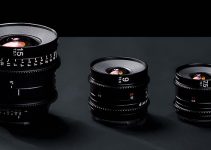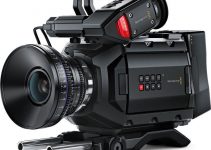Canon dropped a serious bombshell on the filmmaking community with the release of the Canon C300 Mark III. It isn’t that this release wasn’t expected, but for Canon (who is known to usually be a little behind the curve) this is a massive push ahead with a feature-rich, forward thinking, professional cinema camera that can do it all.
It can shoot 4K at 120p. It films in XF-AVC 10-bit, and 12-bit Cinema RAW light. It can capture 16 stops of dynamic range. But what are the truly best, most-useable new features in this beast of a camera?
Drazen Stader of ProFilmmakers gives us a rundown of the 10 best new tricks this new little critter brings to Canon’s impressive C300 line.
Let’s be real for a moment. The C300 line is pretty important to Canon. The original C300 launched Canon’s professional large-sensor camera range after the whirlwind success of the Canon 5D Mark II in 2008. The C300 line has always been protected by Canon in price and specs.
Features like 10-bit internal recording were intentionally left out of the Canon C200, for example, to maintain the C300 II’s prominence in the broadcast space. Although other cameras like the C700 and the C500 II cater to the higher-end, large format crowd, the C300 III is very much their flagship. It maintains their status in the lucrative broadcast world and creates brand loyalty for their massive body of cameras and lenses.
For all intents and purposes, the C300 Mark II was a bit of a dud. It came out a year after the Sony FS7, weighed more, cost the same, and didn’t seem to offer as much.
Many Canon C300 users jumped ship for the FS7 and Canon lost a little of their grip in the market. However, with the release of the C300 Mark III they have really shown us all how Herculean they can be when their feet are held to the fire.
Here are the 10 Best Features of the new C300 Mark III:
The Sensor
This camera features Canon’s newly developed Super 35mm 4K CMOS DGO sensor which is capable of shooting 4K DCI at 120fps (without cropping) with 16+ stops of dynamic range. DGO means Dual Gain Output; Drazen misspoke slightly when he said this is like Dual Gain ISO, what we see in Panasonic cameras.
Dual Gain Output means the camera is processing two different priorities of gain for each pixel and then combining them in real-time to make the best possible image. It can’t be turned off, and doesn’t work at higher frame rates as it requires more image processing power.
Dual Gain ISO is a calibration setting where the sensor is calibrated at two separate ISO settings to improve image quality in low light situations. The Canon C300 III doesn’t offer a Dual Gain ISO.
Interchangeable Lens Mounts
The C300 III has been designed with user swappable lens mounts allowing you to switch back and forth between EF Locking, Standard EF, and PL mounts.
To do this, the camera doesn’t have to be sent into a service center and can be completed by the user/owner by removing 4 screws. The mounts are also interchangeable with the Canon C500 II which opens things up a bit if you’re working with both cameras.
Slow-Motion in 120fps
Being able to film in high frame rates is important for modern storytelling. Canon has always been a little behind with the slow-motion speeds – offering them in lower resolutions, often with an image crop – but the C300 III changes all of that.
Shooting slow-motion in 4K at 120fps with a full sensor read-out, and 2K at 180fps, Canon has significantly upped their game. It is important to note that Dual Gain Output isn’t available at any frame rates above 60fps, but still these slow-motion clips are amazing.
Autofocus in Slow-Motion
Though lots of professionals like to poo poo it, DPAF is one of Canon’s most innovative features. If your work is run-and-gun, or even in most commercial and narrative environments Dual Pixel Autofocus can be a godsend – allowing you to concentrate on framing while the camera tracks the subject’s focus, perfectly. Until now, this feature wasn’t available in high frame rates but now the C300 III can track focus all the way up to 120fps.
Dual CFexpress Card Slots
CFexpress cards offer amazing data speeds, and are currently available up to 1TB. Being able to accommodate 2x CFexpress cards, the C300 III can record in outstanding high quality for longer. This is perfect for documentaries and productions that are on the go.
The faster transfer speeds mean less time spent backing up media, and the additional SD card slot can be used to capture Proxies that can be transmitted for fast turnarounds and finished with the full resolution media later.
Customizable LUTS
This is a blessing for everyone shooting in Canon Log 3! Most new on-camera and client monitors are capable of applying LUTS in real-time but having the ability in-camera, right with you can make a real difference working with clients who don’t understand the finishing process.
It is also easy to overlook white balance and exposure settings when working in Log and having multiple sets of eyes being able to see a corrected image will save lots of headaches in post.
Anamorphic Desqueeze
Preview the corrected image from your favorite ARRI Master PL Lens right in the camera!
Compatible Accessories
The C300 III uses all the same body accessories as the C500 II – EU-V1 Expansion Unit 1, EU-V2 Expansion Unit 2, EVF-V50 OLED Viewfinder – which are already on the market.
Ready to Shoot System
The Canon C300 III is an all-in-one system that is ready to shoot out of the box. It’s complete with a monitor, built-in NDs, XLR audio inputs, and a rock-solid internal recording codec. Solo shooters won’t need to maintain or carry around additional pieces of equipment; you can just grab it and go.
Additional Points
Canon Cinema RAW Light
This is Canon’s 4th camera to feature Cinema RAW light, which is an amazing compressed RAW codec that offers a ton of flexibility in post. When the Cinema RAW light standard first rolled out with the C200, it was met with some compatibility difficulties but it now works well with DaVinci Resolve and Premiere.
Color and Highlight Roll-Off
I’m a sucker for Canon’s color science, especially for how it handles skin tones. Footage from the Canon C200 and C500 II matches well with the ARRI Alexa, and the C300 III takes that a step further. It’s simply beautiful.
Body Updates
The C300 II always felt a bit clunky to me. It was top heavy, and just felt awkward to hold. The body design of the C500 II and identical C300 III is ergonomically superior and it just feels better to hold in the hand..
Battery Life
A good battery system is really important when you’re working professionally as a camera operator. Having to lug around dozens of batteries, constantly swap them out, and continually charge them is a pain.
Not only is the Canon BP-A60 a phenomenal battery, but the C300 III is extremely efficient; you’ll be shooting longer and charging less.
Electronic Image Stabilization
The C300 III uses an electronic image stabilization system. Unfortunately for whatever reason this system isn’t available while shooting in RAW but it’s great to see it included.
This camera is going to be a huge win for Canon. Sony has really left a big hole in the market place by not updating the FS7 and instead opting to introduce the Full-Frame FX9, which by all accounts is a great camera but doesn’t appeal to the broadcast market as well as something like the S35 C300 III.
How do you feel about the new Canon C300 III? Are you ready to drop $11k to get your hands on these tasty new features? Remember, the Canon C300 line has always been protected by Canon. I don’t think we’ll see anything that compares to that lovely DGO sensor find its way to a lower-tier anytime soon.
[source: ProFilmmakers]
Order Links:
Canon EOS C300 Mark III Digital Cinema Camera Body (B&H)
Disclaimer: As an Amazon Associate partner and participant in B&H and Adorama Affiliate programmes, we earn a small comission from each purchase made through the affiliate links listed above at no additional cost to you.
Claim your copy of DAVINCI RESOLVE - SIMPLIFIED COURSE with 50% off! Get Instant Access!




